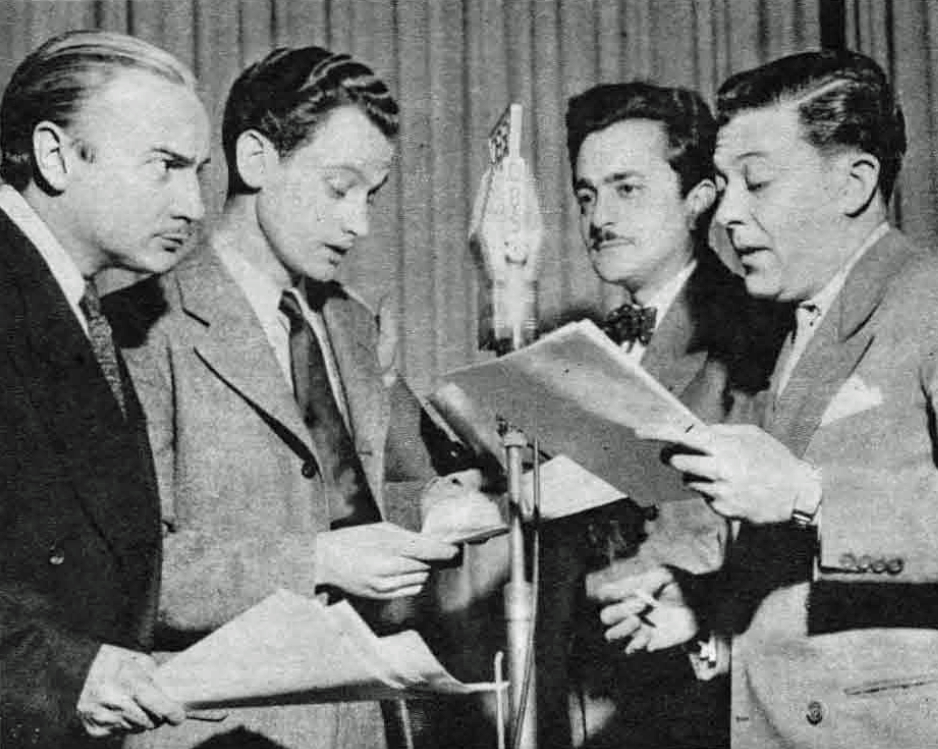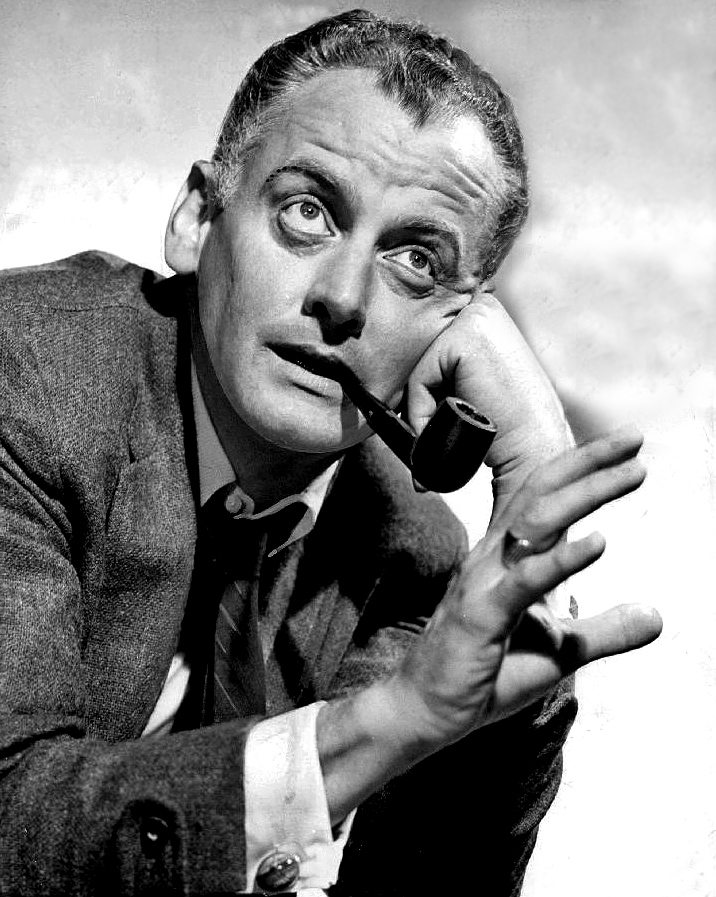Happy Birthday, Art Carney!
Posted by Ivan G. Shreve, Jr. on Nov 4th 2017
No one could have possibly seen it coming. On the night of April 8, 1975, as the live telecast of the 47th Academy Awards was calling it a wrap for the evening, the Best Actor Oscar was handed out to a real “dark horse” in the race. The winner wasn’t Al Pacino—who would appear to have been the favorite for his portrayal of Michael Corleone in The Godfather: Part II. Oscar also overlooked one of Jack Nicholson’s finest film performances (in Chinatown), not to mention Albert Finney (Murder on the Orient Express) and Dustin Hoffman (Lenny).
No, the Best Actor prize went to a veteran actor whose simple, sweet performance as an elderly man traveling in the company of his pet cat in Harry and Tonto (1974) completely won over the Motion Picture Academy of Arts and Sciences. That thespian was christened Arthur William Matthew Carney on this date in 1918, as he was welcomed into this world by his parents Helen and Edward Michael in Mount Vernon, NY. We know this man, best-remembered as the one-of-a-kind Honeymooners character Ed Norton, as Art Carney.
Art was the youngest of six sons in the Carney clan, and his performing ambitions began early in life. He amused family and friends with impressions and won talent contests in both elementary and high school. After graduating from Mount Vernon’s A.B. Davis High School in 1936, Carney quickly set about getting into show business. He talked his way into a job with Horace Heidt’s orchestra, traveling with that musical aggregation on the road for three years doing impersonations and novelty songs. Heidt and his boys were the house band on the popular radio quiz show Pot o’Gold (Art was the show’s announcer), and when the program was brought to the silver screen in 1941 as a feature film, it provided Art with a bit role and his feature film debut.

Art Carney was drafted into the Army during World War II, as an infantryman and machine gun crewman. He served in the 28th Infantry Division during the Battle of Normandy but took some shrapnel that resulted in a shortening of his right leg (3/4 inch) and a limp for the rest of his life. Carney returned to find opportunities waiting for him in radio. Before being drafted, he had worked as an actor on such shows as The Columbia Workshop, Joe and Ethel Turp, Land of the Lost, The Man Behind the Gun, Report on the Nation, and Words at War…and having been mustered out, he began to appear regularly on the likes of Gang Busters, Casey, Crime Photographer, and The March of Time. On Time, Art impersonated political figures (having previously done so on Report) like Winston Churchill, Franklin D. Roosevelt, and Elmer Davis (Carney once joked that to do Davis all you had to do is imitate nasal comic Ned Sparks), and he would mimic Dwight D. Eisenhower on Living 1948.
Carney soon began to build credits on shows like The Adventures of Frank Merriwell, The Big Story, Broadway’s My Beat, The Ford Theatre, The MGM Theatre of the Air, and The Mysterious Traveler. Though Art would be primarily identified as a comic performer, he always stressed that he was first and foremost a serious actor…yet this didn’t matter much to comedian Henry Morgan, who hired Carney to join his company of second bananas on his ABC and NBC shows that aired between 1946 and 1950. (Art would also be a regular on Henry’s early foray into television, The Henry Morgan Talent Hunt.) Art also appeared in a comedic capacity on mr. ace and JANE, and from 1950-51 was a co-star on the underrated Monty Woolley sitcom The Magnificent Montague, portraying Montague’s father (and other roles when needed).
Art Carney started to make inroads into television by this time, with a high-profile gig on The Morey Amsterdam Show as “Newton the waiter” (Morey’s show was also broadcast on radio, and a few recordings have survived). But when Art was asked by comedian Jackie Gleason to portray prissy Clem Finch, the hapless victim to Gleason’s obnoxious loudmouth Charlie Bratten on his DuMont series Cavalcade of Stars, his small screen career was set in stone. Carney also played Sedgwick van Gleason, the disapproving father of The Great One’s wastrel playboy Reginald van Gleason III, but Art’s most famous character was cheerful “underground sanitation expert” Ed Norton, the next-door neighbor and bosom chum of bus driver Ralph Kramden (Gleason) in “The Honeymooners” sketches. When Gleason was lured away from DuMont by CBS in 1952, Carney went with him, and Art also joined Jackie for “the classic 39” episodes of The Honeymooners when it became a filmed sitcom from 1955-56. Playing Ed Norton on The Jackie Gleason Show (both on the 1952-57 original and 1966-70 revival) and The Honeymooners would net Art Carney a total of seven Emmy Award nominations…of which he won six trophies.

Though Ed Norton would be Carney’s famous alter ego, it would be a discredit to the actor not to note that he distinguished himself in other television ventures as well. Art was much-in-demand as a guest star on the popular TV variety shows of the day (Martha Raye, Dinah Shore, etc.); he even headlined a series of popular variety specials in the late 50s and early 60s. He performed more serious roles on television shows such as The Twilight Zone (the classic Yuletide-themed “The Night of the Meek”), Batman (as arch-villain The Archer), and The Virginian. In 1976, he portrayed Chief Paul Lanigan on Lanigan’s Rabbi, a short-lived mystery series loosely based on the popular novels by Harry Kellerman. One of his last boob tube forays was making regular appearances as James “The Weasel” Cavanaugh on the short-lived sitcom The Cavanaughs (1987-89).
Art Carney was also no slouch when it came to performing on stage. His Broadway debut was in 1957’s The Rope Dancers, and subsequent turns in the footlights include Take Her, She’s Mine (1961) and Lovers (1969)—the latter garnering him a Tony Award nomination. His most famous stage role was originating the character of Felix Unger in Neil Simon’s The Odd Couple from 1965-67; when offered the chance to reprise that role in the 1968 feature film version (opposite Walter Matthau, the original Oscar Madison) he declined. Art was certainly no stranger to feature films, having appeared in such features as The Yellow Rolls-Royce (1964) and A Guide for the Married Man (1967).
But one movie role he was hesitant to take was the one that would win him his Best Actor Oscar. He initially turned down director Paul Mazursky to play the “Harry” in Harry and Tonto, primarily because he felt he was too young for the part (Harry was a 72-year-old man and Carney was only 55 at the time). Mazursky persisted, and Carney’s performance paved the way for outstanding feature film work to follow. My personal favorite of Art’s movies is The Late Show (1977), an endearing tribute to hard-boiled detective fiction. (Lily Tomlin plays his reluctant sidekick, and former radio Sam Spade Howard Duff is Carney’s ex-partner.) But the actor also shone in the likes of W.W. and the Dixie Dancekings (1975), House Calls (1978), Movie Movie (1978), and Going in Style (1979—simply superb alongside co-stars George Burns and Lee Strasberg). Art’s also the best thing in The Muppets Take Manhattan [1984]. (“If you two are in love—I don’t wanna know about it.”) Carney’s cinematic swan song was the 1993 Arnold Schwarzenegger comedy-actioner Last Action Hero (1993). He died of natural causes five days before his 85th birthday in 2003.

At the time of Art Carney’s death, one of his obituaries featured an observation from fellow actor Richard Widmark, who had worked with Carney in radio on such shows as Gang Busters. Widmark confessed that, until he saw his friend perform as Ed Norton, he had no idea Art could do comedy! Radio Spirits features collections that spotlight our birthday boy’s dramatic range: The Big Story (As It Happened), The Mysterious Traveler (Dark Destiny), and Words at War: World War II Radio Drama. Happy birthday, Mr. Carney!

